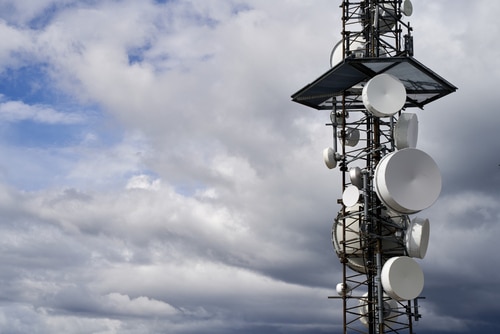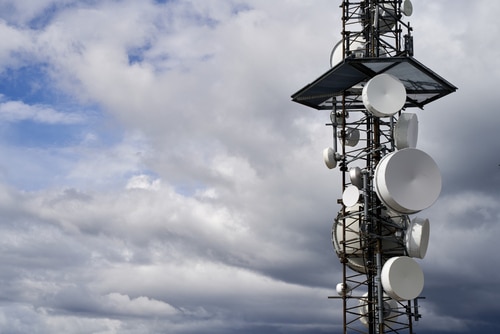
- Field Service Management
- field service technician
- telecommunications
Remote Field Service Software to Overcome Telecom Challenges
The telecommunications industry is undergoing rapid transformation, and as we move into 2025, new pressures are reshaping how telecom businesses operate, especially in the field. The concurrent developments in 5G, fiber rollout, and rising customer needs have compelled service providers to reassess their field operation strategies. Older systems are inadequate in large, disconnected areas where rapid action and efficient operations are critical. Consequently, remote field service software is quickly becoming an essential pillar for telecom operators who need to meet the growing challenges specific to their industry.
Providing services to remote areas introduces a particular set of complexities. The technical needs of vast, under-resourced regions, combined with the need to equip technicians with the right tools, fuel the demand for agile, responsive equipment in the telecommunications sector.
Here, we examine the unique challenges of the telecommunications industry and demonstrate how utilizing state-of-the-art cloud tools can make the difference between poor and excellent service delivery. The Root of the Problem – Key Challenges in the Telecom Field

Limited Infrastructure in Remote Regions
One of the major challenges in the telecommunications industry is operating efficiently in regions with limited infrastructure. Many regions still suffer from unreliable road networks, unstable electricity, and inadequate mobile connectivity. These challenges are significant barriers to organizing work, directing technicians, and repairing disruptions. The consequences of logistical and geographical barriers are reflected in decreased customer satisfaction and higher operational costs.
Performing field tasks remotely in these areas prolongs each job and offers little room for error. Due to the absence of stable infrastructure, telecommunications field technician teams find it much harder to adhere to their schedules or maintain contact with dispatch centers at all times.
Lack of On-Site Support in Remote Environments
The telecom industry struggles with operational issues because field agents frequently work in isolation and lack real-time support. Telecom technician roles and responsibilities have grown more complex, yet support remains limited when agents are dispatched to rural or off-grid areas.
Field staff in urban areas usually have easy access to advice from colleagues or supervisors, but rural technicians often lack such support when facing the unknown. Resolving problems becomes more difficult, fixing them takes longer, and repeat visits become more common, especially if the technician lacks in-depth knowledge in some areas.
Delays Due to Manual Paperwork and Reporting
Although digital transformation is prevalent in telecom operations, outdated manual paperwork remains the norm for field workers, particularly in areas with limited connectivity. Such problems significantly affect the efficiency of operations in isolated areas. Incomplete, inaccurate, and untimely records are a common problem with handwritten forms, and returning physical copies to the main office can delay administrative procedures even more.
Issues with manual processes also impact billing schedules and Service Level Agreement (SLA) standards. Such inefficiencies are particularly acute for technicians who are required to document data carefully, mark precise locations, and record time-stamped events. These tasks become difficult when non-digital procedures are used exclusively in areas with poor connectivity.
Communication Gaps Between Dispatch and Field
Communication fragmentation remains a key challenge in telecommunications technician operations. Due to constant signal degradation, a lack of devices, or incompatible systems, staff in remote areas are often unable to provide their coordinators with timely updates.
The inability to adjust routes or respond promptly to unexpected problems, such as access problems or last-minute cancellations, extends the time it takes to resolve issues. Consequently, teams struggle to monitor progress in real-time and conduct quality assurance due to communication lags.
Resource Misallocation and Tool Unavailability
When technicians are sent out without all the necessary telecom components, simple tasks can easily become complex, particularly in regions far from warehouses. Rural service areas are often plagued by equipment retrieval or restocking delays, which can drag work by hours or even days.
A significant discrepancy exists between the telecom technician tools required and the available resources, which is one of the primary challenges facing the telecommunications industry in 2025. Such inefficiencies result in longer service times, higher travel costs, and lower worker productivity.
Skill Gap Amplified in Isolated Field Visits
As telecom services require increasing specialization, the skill gaps in field teams have widened. Less senior technicians operating independently in remote locations frequently encounter challenges beyond their training.
Senior guidance is often absent, and technicians attempt to resolve critical issues with limited knowledge, increasing the likelihood of service errors or misconfigurations. In such cases, telecom technician jobs become more challenging, as staff must deal with unfamiliar systems independently.
How Remote Field Service Software Helps Overcome These Challenges

Real-Time GPS and Connectivity Optimization
Remote field service software provides real-time GPS updates and route optimization, enabling technicians to navigate challenging terrain more effectively. These types of telecom technician tools are especially useful in regions where road conditions are severe, distances are large, and proper planning is required.
Using remote tracking, the dispatch team can plan work for technicians based on their live positions, thereby reducing fuel waste and idle time. This flexibility in routing offers a solution to the telecommunications industry’s chronic constraints in more rural regions.
Integrated Field Service Remote Assist Features
There are now live assistance tools for field teams to enhance their support. Technicians can receive visual support from supervisors or experts using field service remote assistance tools such as a mobile app. This eliminates the lack of expertise experienced during critical repairs and reduces unnecessary service calls.
Service technicians can stream live video, send pictures, or transmit diagnostic data, allowing for instant remote evaluation. This functionality improves remote support solutions for field service teams to handle critical assignments while operating from remote sites.
Digital Forms and Offline Sync
Leading remote field service app platforms stand out for their ability to allow technicians to fill in digital forms even without an internet connection and synchronize the data as soon as connectivity becomes available. With this feature, technicians working in offline conditions can monitor their service progress without waiting for internet access or losing data.
By overcoming manual paperwork delays, field workers can follow SLA requirements and ensure compliance. This aspect is particularly useful in managing large-scale infrastructure rollouts, such as fiber installations, which are highly dependent on accurate reporting.
Instant Communication Between Field and HQ
Smooth communication is still an essential component of field service remote support. Despite limited bandwidth, dispatchers and technicians remain connected with features such as integrated communication, alerts, and constant status reporting.
This helps field teams handle unforeseen events on the spot. When a technician cannot reach a site or encounters an unexpected barrier, dispatchers are prepared to act quickly, reassign tasks, or request additional help. This level of responsiveness is crucial in addressing the challenges facing the telecommunications industry today.
Smart Inventory and Load-Out Planning
Proper equipment for technicians at the onset is critical to resolving the problem in one visit. Integrating remote field service software with inventory management systems enables technicians to check their spare parts stock, order necessary parts, and check their equipment before going to a job. This is even more important in remote sites where restocking is impossible.
Telecom companies enhance efficiency and increase service consistency by aligning job needs with technician readiness. This directly addresses one of the most persistent challenges in the telecommunications industry: repeated dispatches due to missing tools or incompatible equipment.
Remote Mentoring and Knowledge Sharing

Technicians’ roles are now often associated with multitasking, such as configuring fiber networks and troubleshooting broadband. With remote support solutions for field service, junior or mid-level workers can instantly connect with experienced colleagues for step-by-step guidance.
Real-time mentoring tools, based on video or annotated visual feeds, change telecom technician responsibilities by enabling support despite geographic barriers. Such an arrangement improves service standards, increases staff satisfaction, and reduces the time required for training.
Accelerating Response to Network Disruptions
The timely resolution of network disruptions is one of the major telecommunications industry challenges in 2025. Given the constant availability of digital services, any service disruption can have a ripple effect across several service areas and regions. Remote field service expansion capabilities, including the coordination of technicians in various areas and the introduction of smart escalation procedures, enable fast resolution of outages.
Praxedo’s FSM tools capabilities provide dispatchers with visibility into work in progress, which helps with rapid reassignment in the event of immediate issues. As a result, teams can deliver fast resolution times and maintain high service level agreements, even in challenging access conditions.
Streamlined Work Order Management
Telecom deployments are increasingly complex. Many tasks require multiple stages, involve the cooperation of different teams, and must comply with relevant industry regulations. Remote field service solutions solve this complexity by providing custom work orders and real-time performance tracking.
This digital approach standardizes the work of technicians, contractors, and partners. All participants get standard instructions, document their work uniformly, and report progress through the same system. The benefits? Better understanding, reduced communication errors, and increased adherence to changing telecom technician roles and responsibilities.
Scalable Integration Across Systems
One of the most frequent mistakes is software fragmentation, which occurs when field applications fail to link with organizational back-end systems. Modern remote solutions overcome this problem by providing seamless integrations with ERP, CRM, and accounting applications. This platform compatibility is handy for field operations leaders as their success depends on consolidating information across all business units.
It enables immediate data exchange, combined reporting, and automatic invoicing, thereby reducing the typical difficulties associated with controlling dispersed activities. With complete field activity data in their hands, telecom companies can predict workforce productivity more accurately, manage assets effectively, and maintain high levels of customer satisfaction.
Conclusion
The telecom sector is experiencing a significant transformation. Companies will need to innovate or become obsolete to meet the changing challenges of the telecommunications landscape after 2025. Telecommunications is hindered by numerous barriers, including harsh working conditions, a limited workforce, and outdated communication practices, particularly in serving remote regions. According to The Bureau of Labor Statistics (BLS), “Overall employment of telecommunications technicians is projected to decline 3 percent from 2023 to 2033.”
However, these issues have become assets for companies incorporating remote field service software. Enhanced digital features such as monitoring, responsive scheduling, on-the-spot guidance, and automated inventory tracking enable field technicians to meet growing service demands more efficiently.
Similar tools to the ones from Praxedo are revolutionizing the approach of telecom providers in the field. Businesses can use digital platforms tailored for challenging environments to increase service performance, reduce operational costs, and protect themselves from future uncertainties.
In doing so, they not only address the immediate challenges facing the telecommunications industry but also lay the foundation for a more connected and agile future. For those ready to embrace transformation, the path forward is digital, and the time is now. Contact us today or book your demo right now!
Our similar articles.
-
- Productivity
- Field Service Management
- Gestion d’interventions
- Optimization
- Productivité
6 tips to improve service dispatching
September 27, 2018 -
- Field Service Management
- Field Service Software
- renewable energy
- energy
- solar
Maximizing Solar Efficiency: Tackling Downtime With Field Service Management
April 16, 2024 -
- Software
- Productivity
- Field Service Management
- Gestion d’interventions
- Logiciel
Field service management: 4 best practices for change management
April 28, 2021


